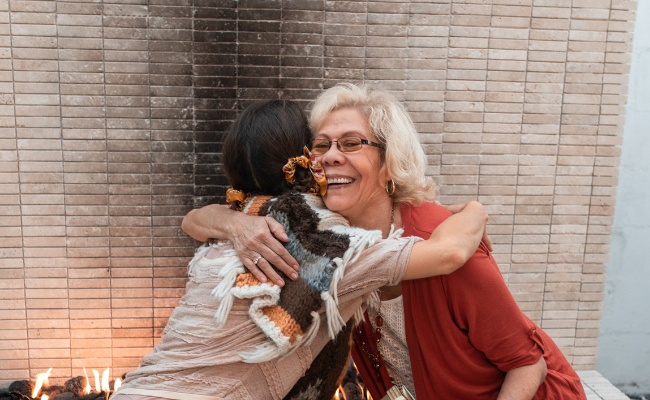5 essential Filipino gestures you need to know

Photo by RDNE Stock project on Pexels
We Filipinos are an expressive people, and that shows in our myriad gestures. To truly understand what a Filipino means and to stay in everyone’s good graces, it’s important to be armed not just with important words but to know the body language, too.
Here are five essential gestures you’ll need to know to relate better to Filipinos.
Pagmamano/“Bless”
When your mom or dad tells you “bless kay lola” at a family reunion, this is what they mean: “Bless” or mano is a gesture done to show respect to the elderly. Originally, this was a gesture of kissing someone’s hand as a greeting. It has since evolved into just touching the hand of elders we respect—parents, grandparents, titos, or titas—to our foreheads. Often, this is done as a greeting—the very first thing you should do when you see them.
[READ: Here’s how to survive a family party in the Philippines]
Beso-beso
Another way of greeting is by doing the beso. The term originated from the Spanish word for “kiss.” Beso-beso thus involves “kissing”—or specifically, touching your cheek to the other person’s cheek. This can be done by anyone, though it’s more common for those who are already friends or are related. If you’re just meeting someone for the first time, a handshake will suffice.
“Makikiraan” (Passing through)
In social situations, Filipinos will tend to do this universal mannerism: holding their arms out downwards, bowing their head, and muttering “excuse me” or “makikiraan po” as they inch their way through a crowd, pass between people talking, or pretty much just about everywhere.
View this post on Instagram
Smiling with eyebrows raised or nodding
This wordless gesture is often used as a sign of acknowledgment or agreement. Imagine meeting the gaze of someone you know in a crowded room, where you can’t exactly approach and say hello just yet. Or maybe you’ve just quickly passed each other in the hallway. In these circumstances, holding the gaze with a smile and nodding or raising your eyebrows is akin to saying “hello.”
Pointing with pouted lips
This last one isn’t so much a sign of respect or a way of greeting, but a quintessentially Filipino gesture all the same. Filipinos are known to point directions using pouted lips. So the next time you ask where the bathroom (or in Filipino, “CR”) is, don’t be surprised if you get pointed lips in response. Just follow the direction of the pout.
View this post on Instagram

